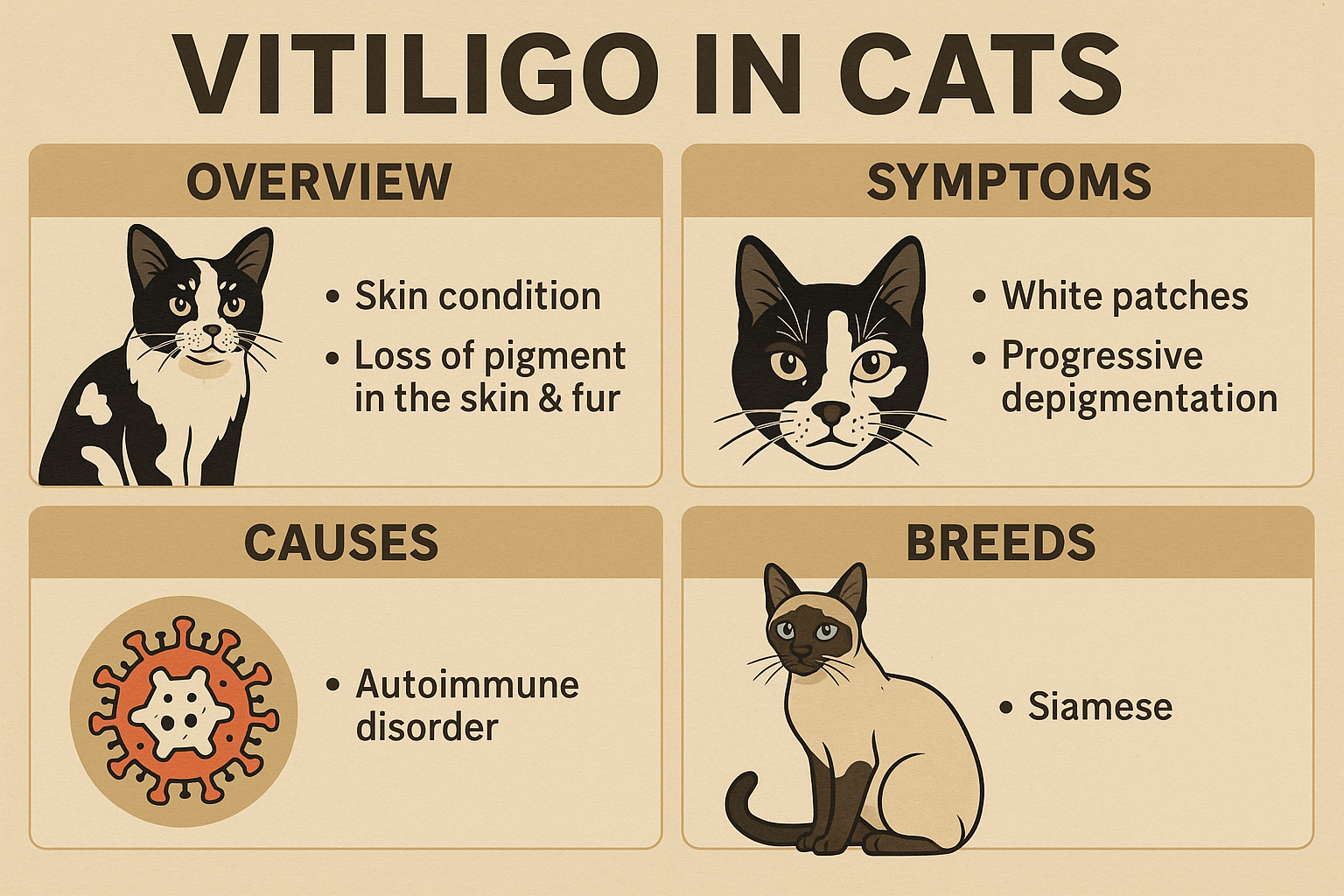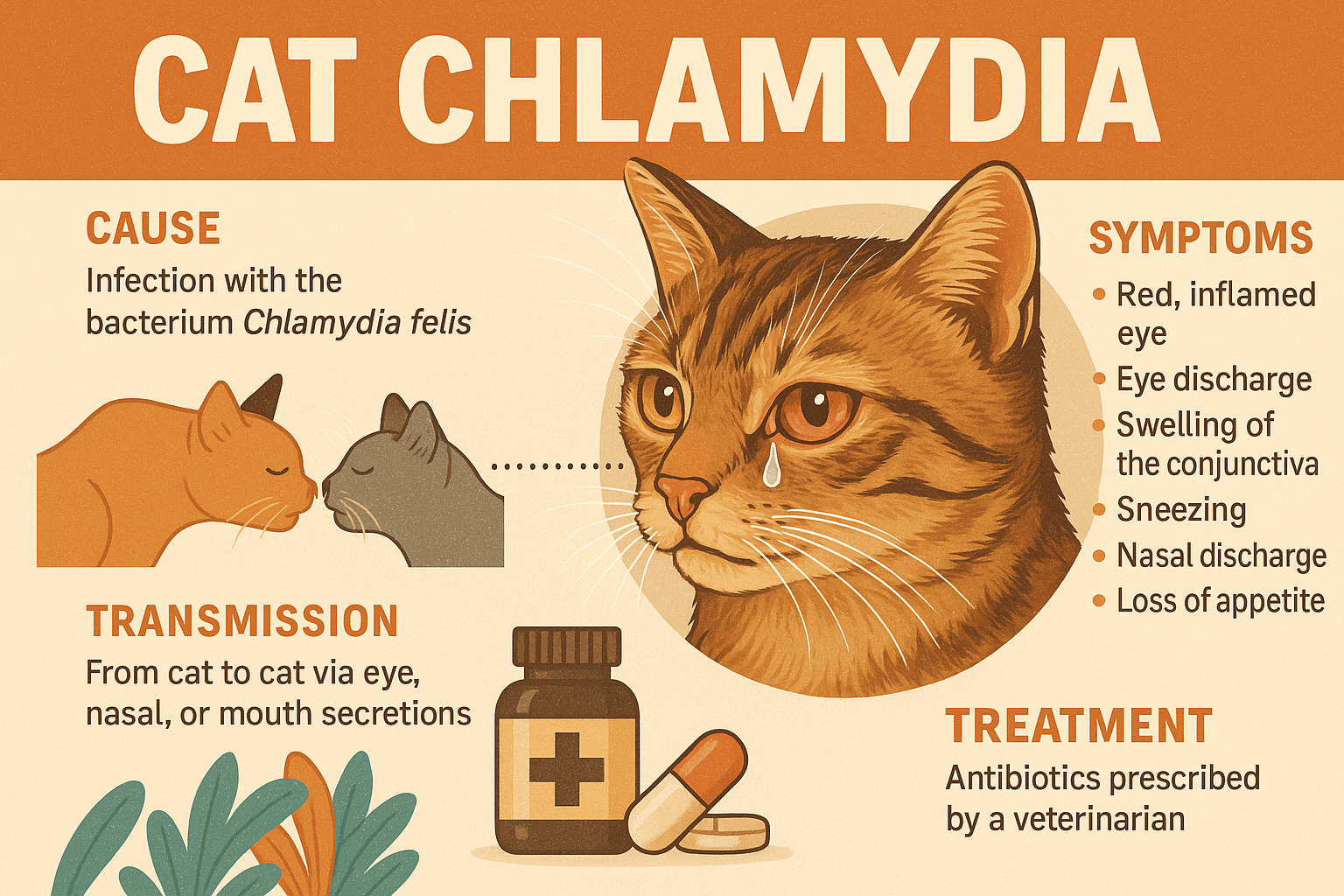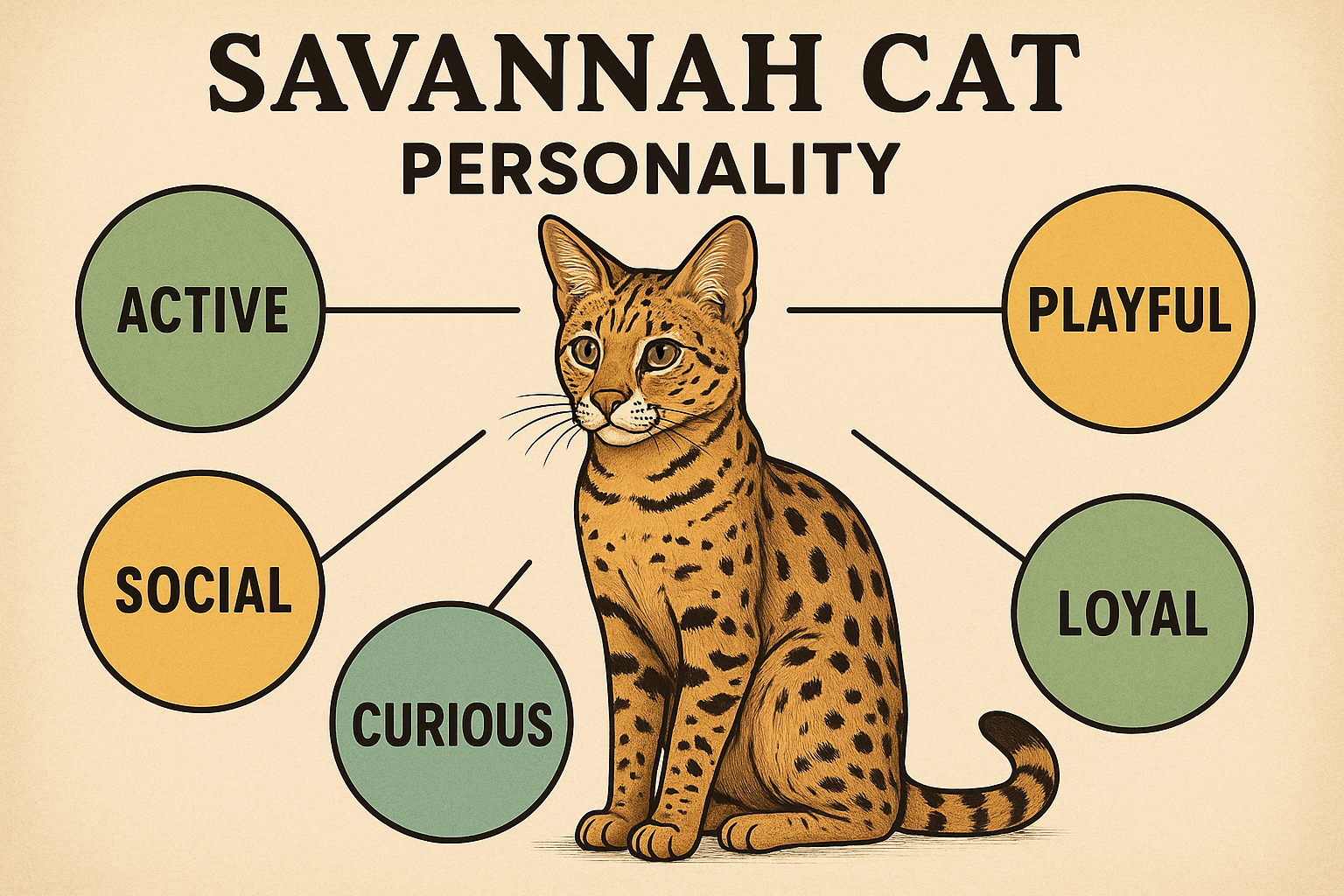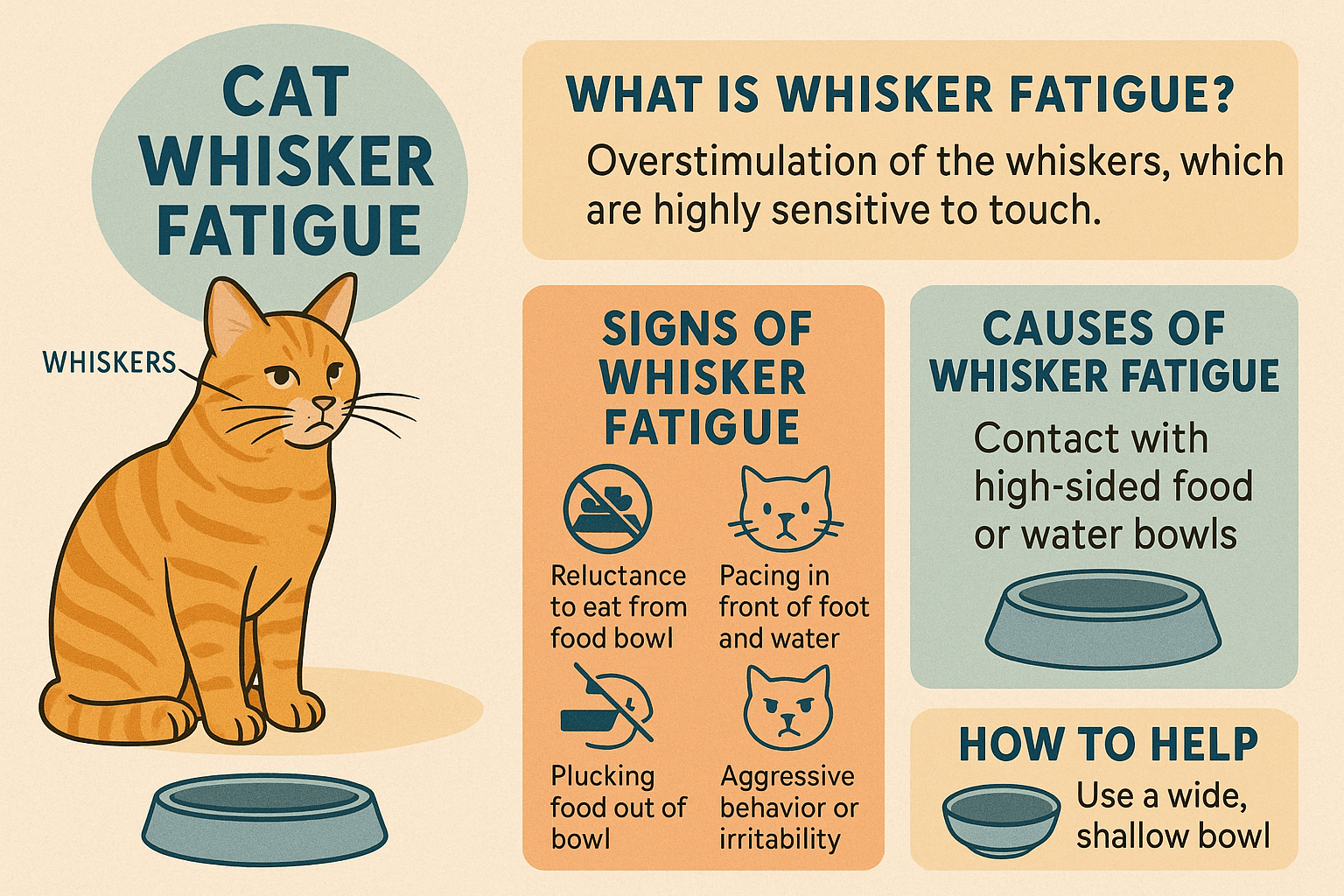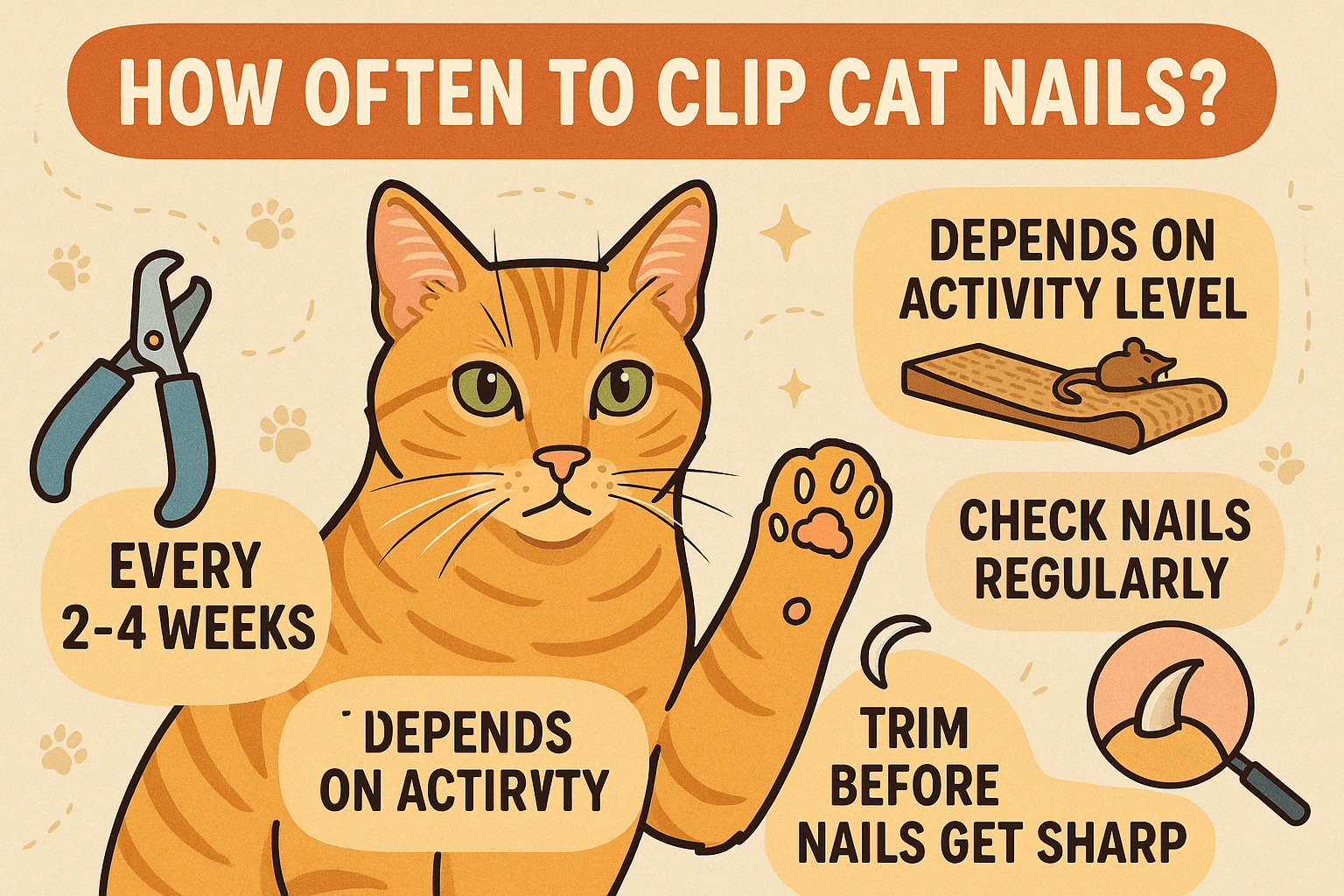Understanding Vitiligo in Cats
Vitiligo is a fascinating yet often misunderstood condition that can affect cats, just as it does humans. Characterized by the loss of pigmentation in patches of skin, fur, or even the nose, vitiligo leaves a distinctive mark on an affected cat’s appearance. While this condition is purely cosmetic and doesn’t harm your feline friend, it can raise concerns for pet owners unfamiliar with its causes and progression. In this blog post, we’ll explore what vitiligo is, how it develops, and the steps you can take to support your cat if they’re diagnosed. Whether you’re curious about this unique condition or seeking guidance for your pet, this guide will provide clarity and reassurance.
What Causes Vitiligo in Cats?
While the exact cause of vitiligo in cats isn’t fully understood, researchers have identified several potential factors that may contribute to its development. Understanding these causes can help demystify the condition and ease concerns.
Autoimmune Reactions:
Vitiligo is often linked to autoimmune disorders, where the body’s immune system mistakenly attacks melanocytes—the cells responsible for producing pigment.Genetic Predisposition:
Some cats may inherit a genetic tendency toward vitiligo, making them more likely to develop the condition early in life.Environmental Triggers:
Stress, exposure to toxins, or certain infections may act as triggers for vitiligo in predisposed cats.Hormonal Changes:
Shifts in hormone levels, particularly during puberty or aging, can influence the onset of vitiligo.Breed-Specific Tendencies:
Certain breeds, such as Siamese or Himalayan cats, are more prone to developing vitiligo due to their genetic makeup.
By understanding these potential causes, cat owners can better recognize and manage vitiligo when it occurs.
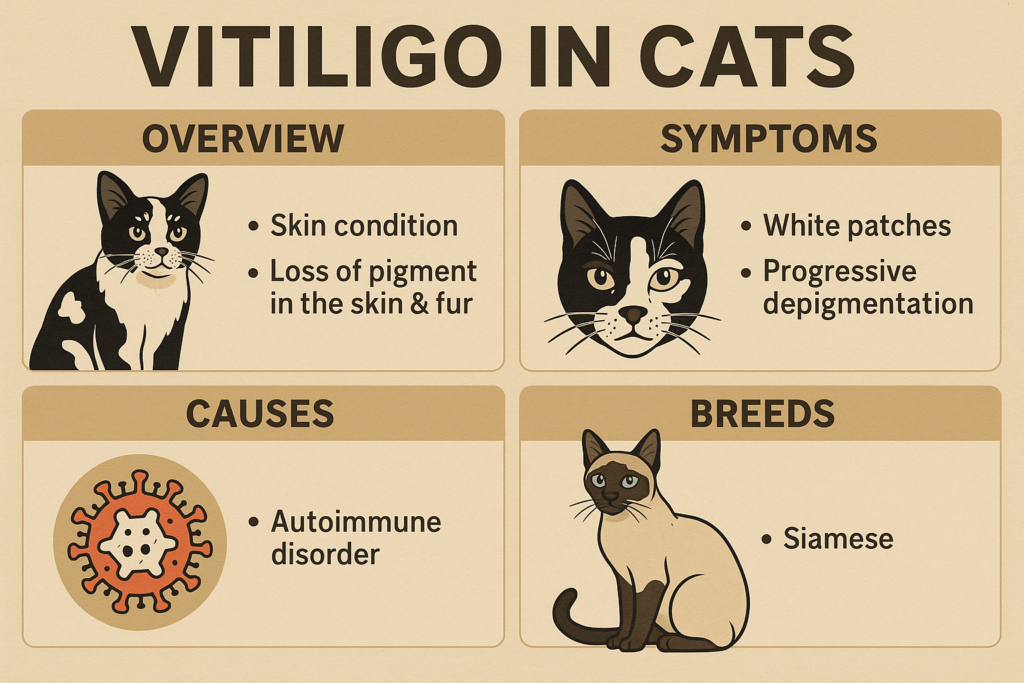
Signs and Symptoms of Vitiligo in Cats
Identifying vitiligo in cats requires careful observation, as the condition primarily affects their appearance rather than their behavior. Here are the most common signs to watch for.
Patchy Loss of Fur Color:
The hallmark of vitiligo is the gradual whitening of fur in specific areas, often starting around the face, ears, or paws.Changes in Skin Pigmentation:
Affected areas may show lighter or completely depigmented skin beneath the fur.Discoloration of the Nose or Pads:
A cat’s nose or paw pads may lose their natural color, turning pink or pale over time.Symmetrical Patterns:
In many cases, vitiligo appears symmetrically on both sides of the body, creating a mirror-like effect.No Physical Discomfort:
Unlike other skin conditions, vitiligo doesn’t cause itching, pain, or irritation, so your cat will likely behave normally.
Recognizing these symptoms helps rule out other potential health issues and ensures peace of mind for concerned pet owners.
Check this guide 👉Understanding Cat Skin Cancer: Best 7 Expert Tips!
Check this guide 👉Understanding Cat Skin Conditions: Best 7 Health Tips!
Check this guide 👉Dry Skin on Cats: Best 7 Expert Tips!
Key Facts About Vitiligo | Management Tips for Owners |
|---|---|
Vitiligo is a non-contagious condition | Provide a stress-free environment |
It doesn’t cause physical discomfort | Monitor changes in fur or skin regularly |
Often begins in young adulthood | Avoid unnecessary treatments or chemicals |
Can progress slowly over time | Consult a vet for confirmation and advice |
More common in certain breeds | Celebrate your cat’s unique appearance |
How to Support a Cat with Vitiligo
If your cat has been diagnosed with vitiligo, there are several ways you can support their well-being while embracing their unique look. These strategies focus on comfort and care.
Maintain a Healthy Diet:
Ensure your cat receives a balanced diet rich in vitamins and antioxidants to support overall skin and coat health.Minimize Stress:
Create a calm and stable environment to reduce potential triggers that could worsen vitiligo.Regular Vet Check-Ups:
Schedule routine visits to monitor your cat’s condition and rule out underlying health issues.Avoid Harsh Chemicals:
Use gentle grooming products and avoid exposing your cat to harsh chemicals that might irritate their skin.Embrace Their Uniqueness:
Celebrate your cat’s individuality—vitiligo makes them one-of-a-kind and adds charm to their personality.
With these supportive measures, you can ensure your cat thrives despite their changing appearance.
Myths and Misconceptions About Vitiligo in Cats
Despite growing awareness, several myths about vitiligo persist, leading to confusion among cat owners. Dispelling these misconceptions is crucial for proper care and understanding.
Myth: Vitiligo Is Contagious:
Vitiligo cannot spread from one cat to another or to humans—it’s purely a genetic or autoimmune condition.Myth: It Indicates Poor Health:
While vitiligo may signal an underlying immune issue, it doesn’t necessarily mean your cat is unhealthy.Myth: It Can Be Cured:
Unfortunately, there’s no cure for vitiligo, but it’s also not harmful or life-threatening.Myth: All White Patches Are Vitiligo:
Other conditions, like fungal infections or allergies, can mimic vitiligo, so professional diagnosis is essential.Myth: It Affects Only Older Cats:
Vitiligo can appear at any age, though it’s more commonly noticed in younger or middle-aged cats.
By addressing these myths, we can foster a clearer understanding of vitiligo and its impact on cats.
Common Misdiagnoses of Vitiligo
Misdiagnosing vitiligo can lead to unnecessary treatments or worry. It’s important to differentiate it from other similar conditions to ensure proper care.
Fungal Infections (Ringworm):
Ringworm causes circular patches of hair loss but often includes scaly or crusty skin, unlike vitiligo.Allergic Reactions:
Allergies can result in redness, itching, and hair loss, which don’t occur with vitiligo.Alopecia Areata:
This autoimmune condition causes patchy hair loss but retains normal skin pigmentation.Hyperpigmentation Disorders:
Some conditions cause darkened skin rather than lightened areas, contrasting with vitiligo’s effects.Trauma-Induced Hair Loss:
Injuries or excessive grooming can lead to bald spots, but these aren’t related to pigmentation changes.
Accurate diagnosis ensures appropriate care and avoids confusion between vitiligo and other conditions.
Breeds Prone to Vitiligo
Certain cat breeds are more susceptible to vitiligo due to genetic factors. Knowing which breeds are predisposed can help owners anticipate and manage the condition.
Siamese Cats:
Known for their striking blue eyes and sleek coats, Siamese cats frequently exhibit vitiligo-like patterns.Himalayan Cats:
This breed’s unique markings make them more likely to develop depigmentation over time.Oriental Shorthairs:
Their close relation to Siamese cats means they share a higher risk of vitiligo.Sphynx Cats:
Hairless breeds like the Sphynx may show visible skin depigmentation more prominently.Mixed-Breed Cats:
Even mixed-breed cats with ancestry from predisposed breeds can develop vitiligo.
Understanding breed tendencies allows owners to monitor their cats proactively and seek veterinary advice when needed.
Emotional Impact on Owners
Discovering vitiligo in your cat can evoke a range of emotions, from concern to curiosity. Addressing these feelings helps foster acceptance and positivity.
Initial Concern:
Many owners worry that vitiligo signals a serious health issue, but learning about its harmless nature alleviates fears.Adjusting Expectations:
Accepting changes in your cat’s appearance takes time, especially if you envisioned their original look.Bonding Through Uniqueness:
Vitiligo can deepen your connection with your cat as you celebrate their individuality together.Seeking Support:
Joining online communities or forums can connect you with others who understand the experience of caring for a cat with vitiligo.Finding Joy in Differences:
Instead of focusing on what’s changed, embrace the beauty and character that vitiligo brings to your feline companion.
By addressing emotional responses, owners can cultivate a positive outlook and cherish their cat’s evolving beauty.
Frequently Asked Questions About Vitiligo in Cats
Is vitiligo painful for my cat?
No, vitiligo is purely cosmetic and doesn’t cause pain or discomfort.
Can vitiligo spread to other pets?
No, vitiligo is not contagious and cannot be transmitted to other animals or humans.
Should I treat vitiligo in my cat?
Treatment isn’t necessary unless an underlying condition requires attention. Focus on supportive care instead.
Will my cat’s fur grow back normally?
Once depigmented, the fur typically remains white, as melanocyte function doesn’t return.
Can diet improve vitiligo?
While diet won’t reverse vitiligo, a healthy diet supports overall skin and coat health.
Celebrating Your Cat’s Unique Beauty
Vitiligo in cats is a harmless yet intriguing condition that highlights the uniqueness of each feline companion. By understanding its causes, recognizing its symptoms, and providing supportive care, you can ensure your cat remains happy and healthy despite their changing appearance. Embracing their individuality not only strengthens your bond but also reminds us that beauty comes in all forms—even in the form of a patchwork of colors. With love and patience, your cat will continue to bring joy and wonder into your life, no matter how their fur evolves.
Cat Chlamydia: Best 7 Expert Tips! Learn how to identify, treat, and prevent feline chlamydia with expert advice on symptoms, care, and long-term management for your cat’s health.
Savannah Cat Personality: Best 7 Expert Tips! Discover the unique traits, care needs, and expert advice for understanding and bonding with your energetic, intelligent Savannah cat.
Understanding Cat Whisker Fatigue: Best 7 Expert Tips! Discover causes, signs, and solutions for whisker fatigue to keep your cat comfortable and stress-free with expert advice.
How Often to Clip Cat Nails: Best 7 Expert Tips! Discover expert advice on trimming cat nails, maintaining paw health, and keeping your home scratch-free with simple, actionable tips.

